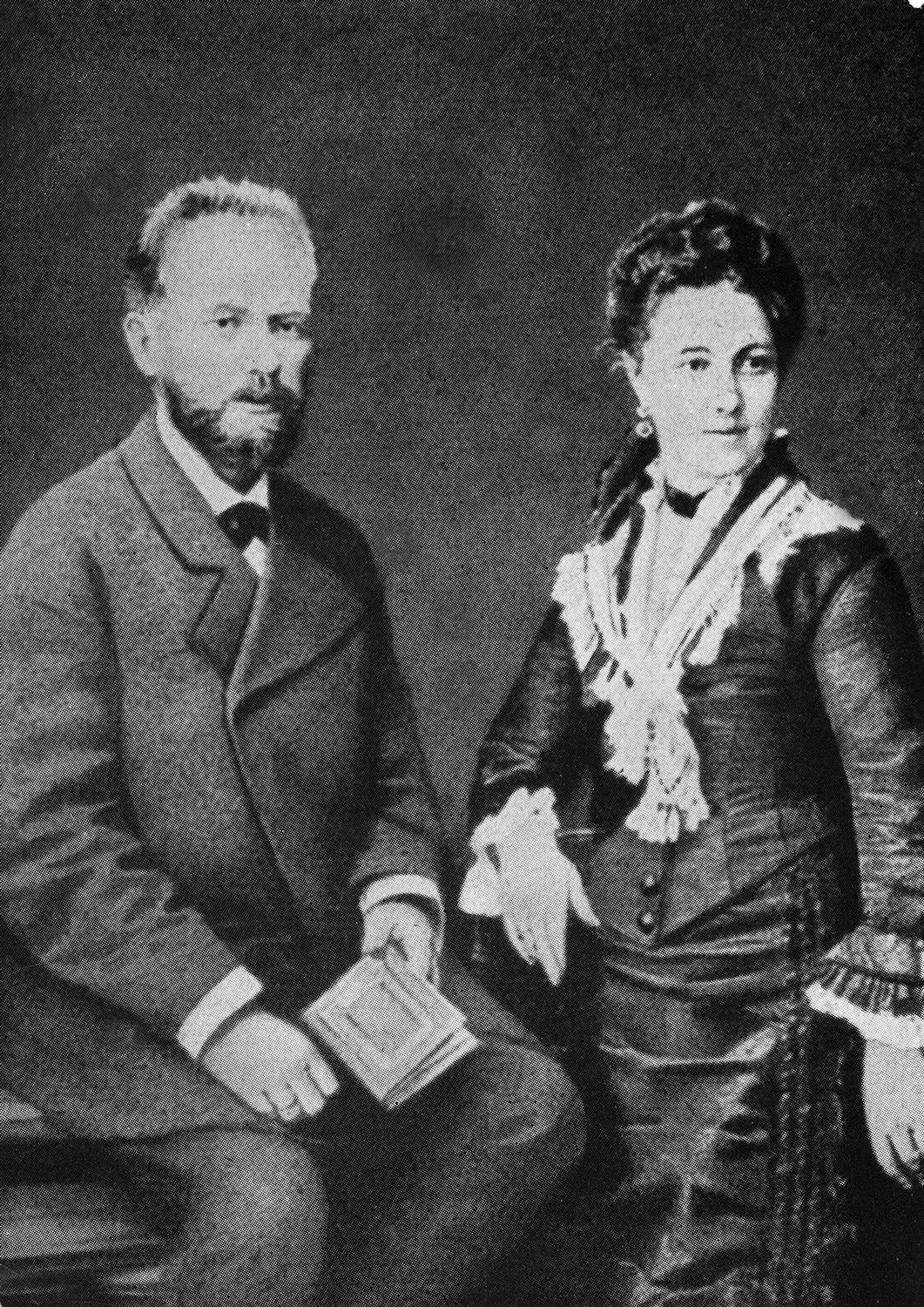
There are few pieces in the repertoire written for any instrument that has reached the popularity of this concerto. The reasons are simple: the first movement is epic in scale, both in the way Tchaikovsky writes for the orchestra, and in the technical demands expected of the soloist; the second movement is intimate and passionate, like a love letter written by a desperate young man in love for the first time; and the third and final movement is like a wild night out on the dance floor — fast songs furiously danced, with a slowish teaser sandwiched in the middle. In other words, this concerto has all the fixins!

To be a homosexual man in 19th century Russia, and it sadly hasn’t much changed since, was to be a ghost who wears a costume. We now know through letters written to close friends and family, that his homosexuality was openly accepted by a very small circle. Tchaikovsky, aided by this small circle, took great pains to hide his relationships and one of those relationships was with his favorite composition student, the violinist, Iosif Kotek. This particular relationship is very important to mention because it was Kotek who introduced Tchaikovsky in 1876 to the wealthy widow, Nadezhda von Meck, who would quickly become his protector and benefactor.

Kotek, called “Kotik” (little tomcat in Russian) by Tchaikovsky, was summoned to Clarens, Switzerland in 1878 by the composer, who was utterly distraught over a failed attempt at marriage which had lasted all of six weeks. At the time, Kotek was studying violin in Berlin with the renowned Joseph Joachim and brought with him to Switzerland, amongst other pieces of music, Édouard Lalo’s Symphonie espagnole. With Tchaikovsky at the piano, the two greatly enjoyed playing this piece together and this gave Tchaikovsky and inspiration and impetus to write a violin concerto.
Writing the concerto went quickly and with Kotek helping out with any technical questions and concerns, Tchaikovsky didn’t play the violin, he finished composing it within a month! He wanted to dedicate the concerto to Kotek, but it was becoming quite apparent that the two had spent much time together directly preceding and following the wedding, and rumors had begun. In 1879, Tchaikovsky presented the printed concerto to the great Russian violinist and pedagogue, Leopold Auer, but he refused to play it. Many years later, in 1912, Auer wrote such a beautiful explanation for this refusal.
When Tchaikovsky came to me one evening, about thirty years ago [actually thirty-four], and presented me with a roll of music, great was my astonishment on finding this proved to be the Violin Concerto, dedicated to me, completed and already in print. [This was the reduction for violin and piano, printed in 1878; the publication of the full score did not take place until 1888.] My first feeling was one of gratitude for this proof of his sympathy toward me, which honored me as an artist. On closer acquaintance with the composition, I regretted that the great composer had not shown it to me before committing it to print. Much unpleasantness might then have been spared us both….
Warmly as I had championed the symphonic works of the young composer (who was at that time not universally recognized), I could not feel the same enthusiasm for the Violin Concerto, with the exception of the first movement; still less could I place it on the same level as his purely orchestral compositions. I am still of the same opinion. My delay in bringing the concerto before the public was partly due to this doubt in my mind as to its intrinsic worth, and partly that I would have found it necessary, for purely technical reasons, to make some slight alterations in the passages of the solo part. This delicate and difficult task I subsequently undertook, and re-edited the violin solo part, and it is this edition which has been played by me, and also by my pupils, up to the present day. It is incorrect to state that I had declared the concerto in its original form unplayable. What I did say was that some of the passages were not suited to the character of the instrument, and that, however perfectly rendered, they would not sound as well as the composer had imagined. From this purely aesthetic point of view only I found some of it impracticable, and for this reason I re-edited the solo part.
Tchaikovsky, hurt at my delay in playing the concerto in public and quite rightly too (I have often deeply regretted it, and before his death received absolution from him), now proceeded to have a second edition published, and dedicated the concerto this time to Adolf Brodsky, who brought it out in Vienna, where it met with much adverse criticism, especially from Hanslick. The only explanation I can give of the orchestral score still bearing my name is that when the original publisher, P. Jurgenson, of Moscow, to suit the composer, republished the concerto, he brought out the piano score in the new edition, but waited to republish the orchestral score until the first edition of it should be exhausted. This is the only way I can solve the problem of the double dedication.
… The concerto has made its way in the world, and after all, that is the most important thing. It is impossible to please everybody.
It was eventually premiered in 1881 in Vienna, by the violinist Arthur Brodsky to a disastrous review by the leading music critic in Europe, Eduard Hanslick, whose obvious xenophobia was made apparent when he remarked that the last movement was, “odorously Russian.” Within a decade, however, the piece had its rightful place in the repertoire and it has remained there ever since.
One of the greatest documents of a style of violin playing that simple doesn’t exist any longer but what is certainly closer to what Tchaikovsky would’ve heard is the famed 1929 recording made by the great violinist, Bronisław Huberman (1882–1947), with William Steinberg conducting the Staatskapelle Berlin Orchestra. It is my favorite recording of this concerto.
A very close second place is a recording that was also made in 1929 — Mischa Elman with the London Symphony Orchestra, conducted by Sir John Barbirolli.
Both of these violinists represent the generation of virtuosi that directly preceded Jascha Heifetz. I think it’s crucial to understand and acknowledge that Heifetz didn’t necessarily bring a new level of perfection to violin playing, as is clearly evidenced by the technical prowess of Huberman and Elman. But, like Kreisler did before him, he brought a new style of playing that fit the zeitgeist of the decades surrounding WWII. Most are familiar with Heifetz later recording he made for RCA, but I much prefer this recording he made in 1937 with London Philharmonic, conducted by John Barbirolli.
A wonderful gem I discovered today that I’m so thankful exists is a televised performance with the great Nathan Milstein from 1963 with the Chicago Symphony, conducted by Walter Hendl. His lyrical tone and phrasing is just so appealing.
Let’s skip ahead to my favorite performances I’ve found on YouTube. The Dutch violinist, Janine Jansen, plays this concerto with such wanton abandon and commitment. Here’s a recent performance she gave with the Berlin Philharmonic, conducted by Paavo Järvi.
And every discussion about Tchaikovsky’s Violin Concerto should always include a reference to this truly extraordinary video!
